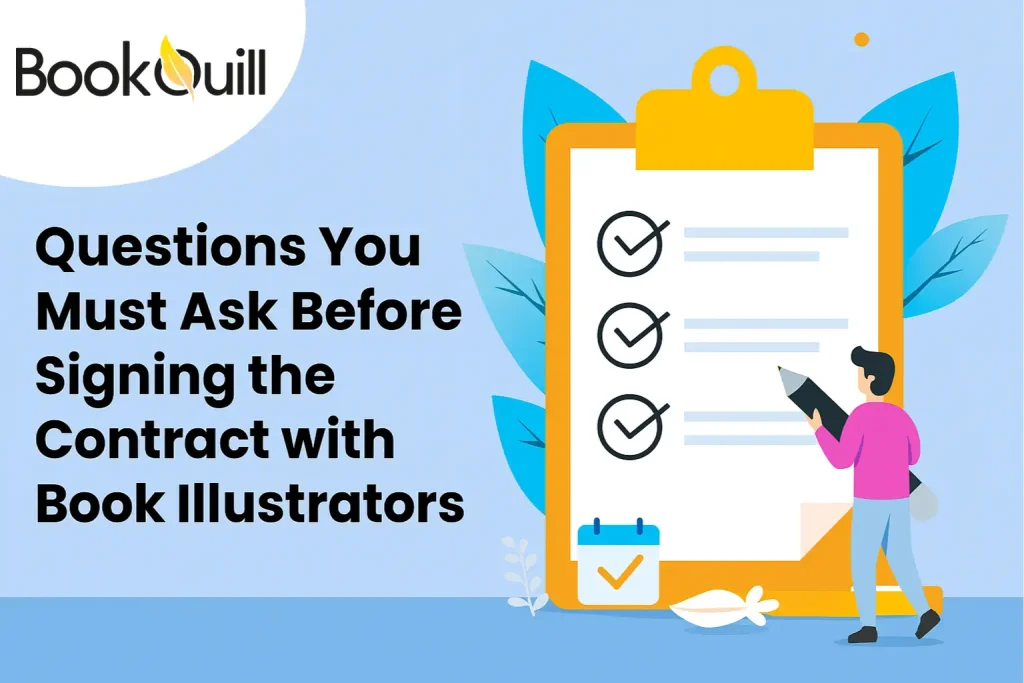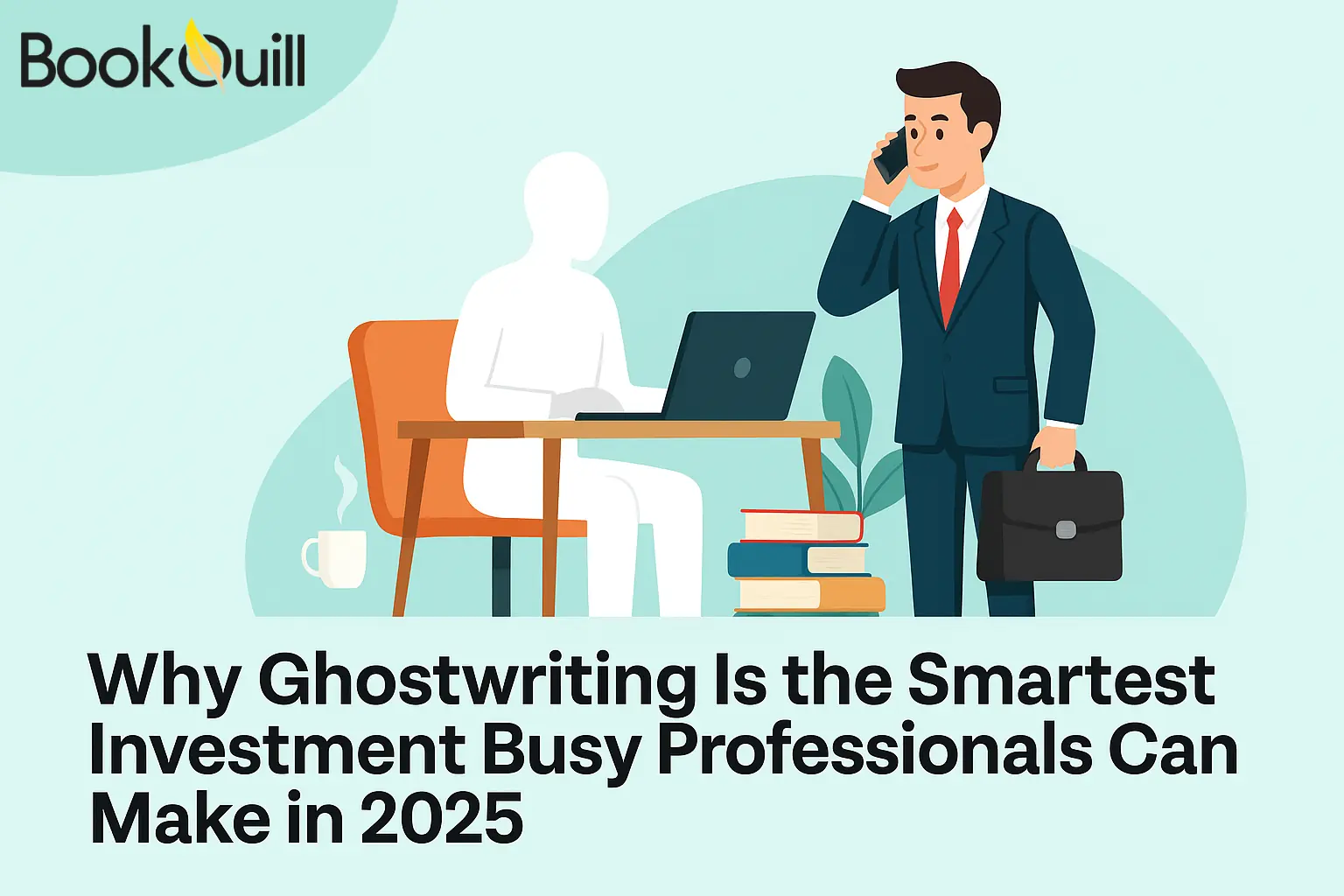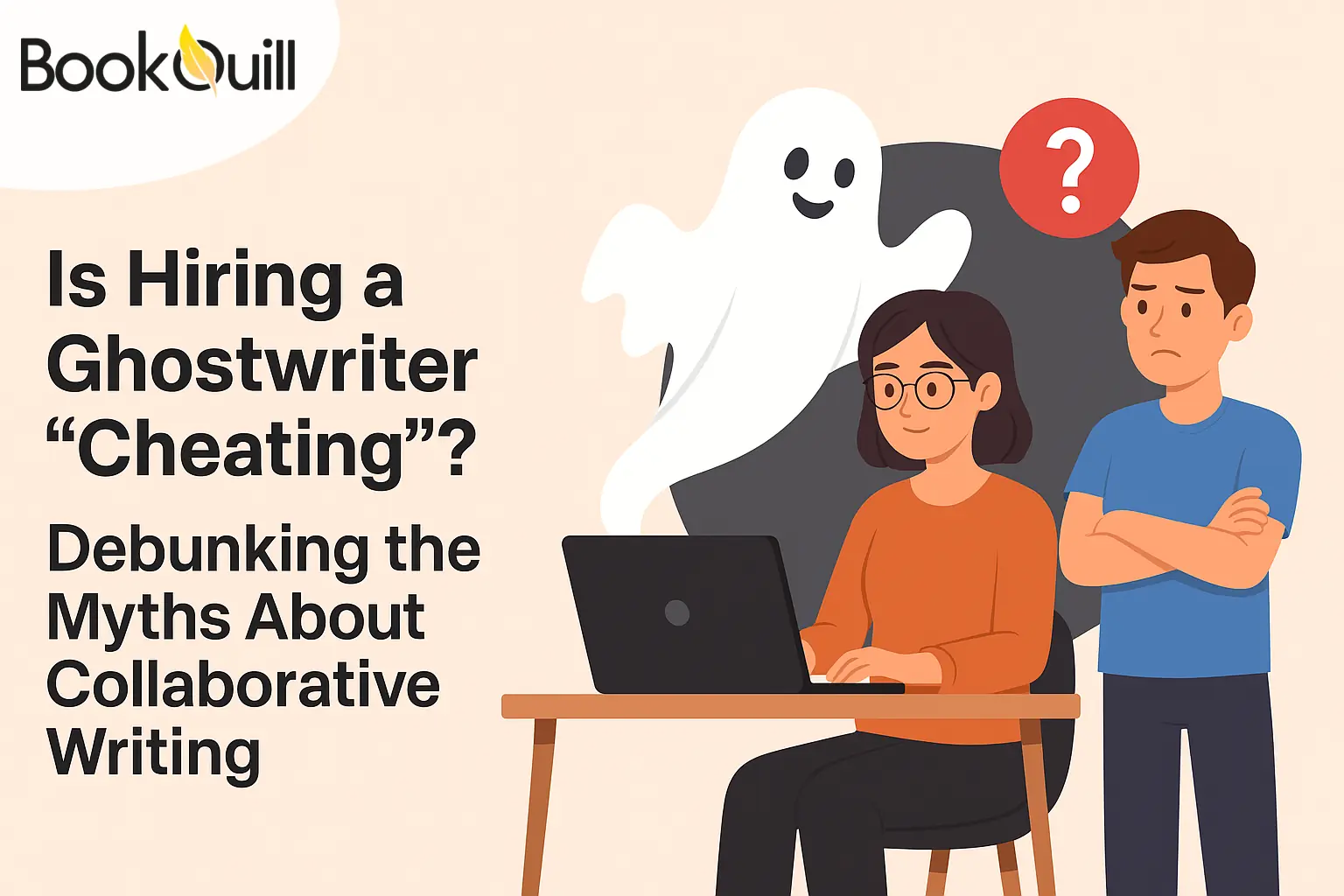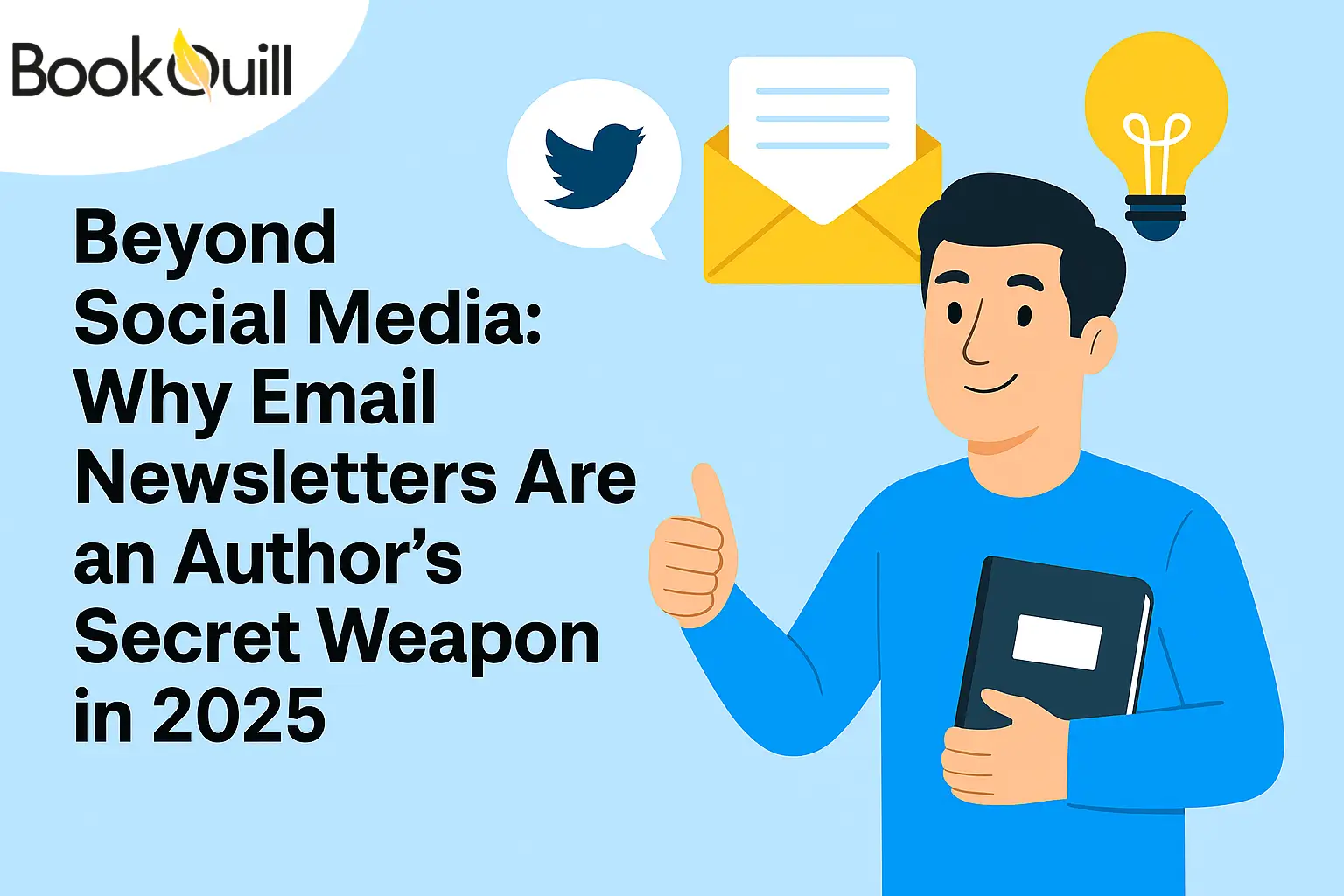Table of Contents
Explore Blogs
Trending on Ebook
Questions You Must Ask Before Signing the Contract with Book Illustrators

One thing that the entire world understood post-COVID is that people have increasingly become visual learners. This means that people rely mostly on visuals to understand and process the information that is presented to them.
So, how is this piece of information valuable to you, as a writer?
This tells you that if you have put your heart and soul into writing your book, whether it’s a Y/N novel, children’s books, or even a touching personal memoir, just printing it without illustration would harm your book.
People need something to focus on that allows their eyes to rest while scanning through large chunks of text. The issue of attention span and visual engagement is not limited to children; it affects readers of all ages. Therefore, don’t assume that your book doesn’t require illustrations because it does.
Now what should you do then? Don’t stress, simply hire a book illustrator to turn your vision into pictures that readers can see and feel.
Now comes the main point of this blog: helping you find and hire professional book illustration services that you do not regret later.
If you search for book illustrators or services, you will find thousands of options on Google (I am not exaggerating), but the real question is, how do you find the best one? Simple – by asking the right questions.
Now, what are these questions? I am going to tell you. Don’t worry, I will not let you go unprepared to meet them.
Key Takeaways
- Every book needs illustrations, so if you are still second-guessing yourself, please stop.
- Don’t hire book illustration services blindly. Ask them all the right questions that will give you information about how they work.
- The first question should always be about ownership and rights. Make sure you have full ownership of the illustration that you are using in your book.
- Nobody, and I repeat, not even the top book illustration service, will give you a perfect illustration on the first time. So please ask about their revision policy.
- Ask about the timeline with specific dates. It is very important to make sure you do not miss any important publishing deadlines.
- Ask illustrators about what genre they work on the most. You must hire someone who knows and understands your genre. This will ensure that the illustration fits your story’s tone, mood, and target audience.
- I don’t want you to have any financial or payment-related surprises down the road. This is why you should discuss payment structure and refunds and sign the illustration contract.
- Illustrations are not limited to books. If you have marketing material for social media or even merch, you can use those illustrations on them, too. This is why you should make sure you ask whether the pictures they are providing can be used elsewhere.
- To check their reliability and quality of work, check reviews left by their previous clients.
- There are times when unexpected things happen, which can lead to cancellations. If this thing is not decided previously or discussed, it can ruin things. This is why it’s best to discuss or have an exit plan in the contract for cancellation and refunds.
- Don’t ever hand over your manuscript without signing a written contract. Do not trust any book illustration services that do not offer a written contract with sections outlining rights, payments, delivery format, and more.
Why These Questions Are Important When Hiring a Book Illustrator
Hiring a book illustrator isn’t just about picking someone with nice artwork. It’s more than just creativity; it also involves legal agreements, money, and planning details.
If you don’t ask the right questions before signing a contract, you could face problems like:
- Missed deadlines
- Art that doesn’t match your style
- Surprise costs
- Confusion about who owns the art and how it can be used
Even successful authors have made these mistakes. For example, author-illustrator Peter H. Reynolds once had to redo a whole project because he and the client didn’t agree on the vision. It costs time and money.
Seeing your characters come to life is exciting, but if you ignore the business side, the whole project could fall apart. That’s why it’s important to ask smart questions before any drawing begins.
Smart Questions to Ask Before Signing with an Illustrator
1. Ask About What Rights Do You Actually Get?
You’d be surprised how many authors assume that once they’ve paid for artwork, they fully own it. But that’s not always true. In creative work, payment doesn’t always mean ownership – and unless your contract clearly says otherwise, the illustrator might still hold all the rights.
Before signing an illustrator, you need to ask:
“Am I buying full ownership, or just licensing the art for limited use?”
Here’s the difference in simple terms:
Full ownership means you can use the art however and wherever you want — in your book, on merchandise, in ads, even as NFTs if you choose.
Licensing gives you limited rights, often for a specific format (like just your eBook or paperback). Anything else might cost extra.
This detail matters even more in a children’s book illustrator contract, where books are often adapted into coloring pages, educational material, or character merchandise. If you don’t get those rights in the beginning, you may have to pay extra or re-negotiate later.
2. How Many Revisions Are Included – and How Are They Handled?
Even the best illustrators don’t always get everything right on the first try. Maybe a character doesn’t look the way you imagined, or the mood of the scene feels off. That’s totally normal — as long as both of you agree on how to handle changes.
Before hiring book illustrator services, ask upfront:
“How many rounds of revisions are included in the price?”
Most illustrators allow 1–2 rounds of small changes. Bigger changes – like redoing a full scene – might cost extra. If that’s not clear in your contract, you could face surprise charges or end up with artwork you don’t love.
You should also ask:
- How should you send feedback? (Written comments, Marked PDFs, or Emails)
- How long will revisions take?
- What if I’m still not satisfied after the final round?
Good communication here makes everything smoother. Many book illustration services now use tools like Trello or Google Drive to keep drafts and feedback organized – a helpful option if you’re juggling multiple deadlines.
The bottom line: feedback is part of the creative process, but it needs boundaries that everyone agrees on from the start.
3. What’s the Timeline and Can They Stick to It?
You probably already have a schedule in mind – maybe you’re launching during a holiday season, submitting to a contest, or timing your release with another event. That makes deadlines non-negotiable.
You probably already have a schedule in mind, maybe you’re aiming for a holiday release, a contest deadline, or a big event. That means timing is critical.
So, before anything else, ask your illustrator:
“What’s your typical timeline – and what happens if there are delays?”
A good illustrator should be able to give you:
- A clear schedule with key steps (like sketches, final art, and delivery)
- Actual dates, not vague terms like “soon” or “a few weeks”
- Time built in for revisions
- A plan for what to do if either of you needs extra time
Don’t just take their word for it; ask to see a sample schedule from a past project. Professional illustrators, especially those from professional book illustration services, usually have timelines already built into their process.
It can delay your editor, formatter, or even your book launch.
One self-published author shared on Reddit that a six-week delay in final artwork caused them to miss their IngramSpark print window, pushing their release back by two months.
4. What Experience Do They Have in Your Genre?
Not every illustrator is right for every kind of book. Someone great at drawing dark fantasy scenes might not be the best choice for a sweet bedtime story. That’s why it’s important to find someone who understands your genre.
Before hiring a book illustrator, ask:
“Have you worked on books like mine before?”
This isn’t just about talent; it’s about matching the right style and tone for your audience. For example, an artist who’s great at realistic portraits might not be the best fit for playful, cartoon-style characters. Someone who is used to graphic novels may not know how to pace a picture book for kids.
Here’s how to check if they’re a good match:
- Ask for samples from your genre, not just their general portfolio
- See if they’ve illustrated any published books in your category
- Look for patterns in their work, like color style, mood, or textures
Many professional illustrators, especially those from the best book illustration services, organize their portfolios by age group or genre, which makes it easier to find the right fit.
5. How Are Payments Structured – and Are Refunds Possible?
Let’s talk money because no one likes surprise costs later.
Before agreeing to anything, ask:
“What’s your payment structure, and do you offer refunds if the project is cancelled?”
Most illustrators ask for a 30–50% deposit up front, with the rest paid when the project is done. Some break payments into parts, like after sketches, then after final color. That’s completely normal.
What matters most is that everything is clear, fair, and written down (for both sides).
Also ask:
- What happens if I cancel halfway through?
- Is any part of the payment refundable?
- Are there extra fees for rush work or extra revisions?
Avoid paying 100% upfront, unless you’re using a trusted platform or working with an established business. Reputable book illustration services usually offer clear payment plans, deadlines, and some protection for both sides.
6. Do Book Illustrators Get Royalties – and Should They?
Before you work with any illustrator, ask:
“Do you normally get royalties for your illustration work?”
The short answer: not usually, especially in self-publishing.
Most freelance illustrators charge a flat fee. You pay for their time, style, and final artwork – and that’s it. Royalties, which are a percentage of future sales, are more common in traditional publishing contracts where both author and illustrator are part of the publisher’s team.
That said, some illustrators might request royalties instead of (or in addition to) an upfront payment. If so, make sure that the arrangement is clear in the contract, and that both sides understand:
- How royalties will be tracked
- When they’ll be paid
- What happens if the book is never published
In self-publishing, it’s usually simplest to stick to a flat fee. It avoids confusion and gives both sides a clean break when the project wraps.
And remember – when working through book illustration services, royalty terms (if offered at all) will usually be defined in detail upfront.
7. Can I Use the Artwork for Marketing or Merch?
You’ve paid for the art, right? So, of course, you can use it for bookmarks, ads, T-shirts… right?
Not always.
Before hiring book illustrator services, it’s critical to ask:
“Does this include permission to use the art for promotion or merchandise?”
Many illustrators only give you permission to use the artwork inside your book or on the cover. If you want to use it for other things—like printing posters or running ads—you might need to pay extra for that.
Why this is important:
- Some illustrators charge more for commercial use
- Using the art without the proper rights can cause legal problems
- You don’t want to discover this after you’ve printed 500 bookmarks
If you plan to use the art for more than just the book, talk about it early and make sure it’s in your contract. Many top book illustration service providers offer packages that already include promo and merch usage, which makes things easier later on.
8. Can I See Client Reviews or Past Work?
When you’re hiring a book illustrator, one of the easiest ways to avoid problems is to ask.
“Can I see reviews from other clients or examples of your work (completed)?”
This isn’t about doubting their skills; it’s about making sure they’re a good fit and trustworthy. A professional illustrator should be able to show you:
- A portfolio with finished and published art
- Reviews or feedback from past clients
- Links to books they’ve worked on (like on Amazon or Goodreads)
You can also check their presence on freelancer sites or illustration platforms. A quick glance at their book illustration services website or even their Instagram can show you how they interact with other authors and how they present their work publicly.
Here’s a quick test: Do they have repeat clients? That often says more than a polished portfolio.
In short, a little research goes a long way and could be the difference between a smooth collaboration and a frustrating one.
9. What Happens If We Disagree or End the Project Early?
Even with the best intentions, creative projects don’t always go as planned. Maybe your visions don’t match, maybe communication breaks down, or maybe life happens, and one of you has to step away.
That’s why you should always ask:
“What’s the plan if we can’t finish the project or disagree along the way?”
A good illustrator will understand that things can change and should have a fair process in place.
Important things to clarify:
- What happens if either of you wants to end the contract early?
- Will you get a partial refund if only part of the work is done?
- Who owns the sketches or partial illustrations created up to that point?
- Can you still use unfinished work?
Some book illustration services include a “kill fee” clause – meaning if the project ends early, you pay a portion of the total fee for work already done. This protects both parties and avoids conflict.
The bottom line is that talking about an exit plan before problems arise makes things much smoother if they ever do.
10. Do You Use a Contract, and What’s Actually in It?
This one’s big, so don’t skip it.
Before you commit to anything, always ask:
“Will we have a contract, but what details does it include?”
It’s a tool to make sure both sides are clear on what’s expected, deadlines, payment, revisions, rights, and more. If something goes wrong later, this is what you’ll both refer back to.
A solid illustrator contract should cover:
- Who owns the artwork and how it can be used
- Payment amounts and deadlines
- Revision limits and how feedback works
- What happens if the project is delayed or cancelled
- Delivery format (files, sizes, resolution, etc.)
If an illustrator doesn’t offer a contract or avoids it, that’s a red flag. Even freelancers should have a basic agreement, and most top book illustration services provide one automatically.
For more help understanding usage rights, the SCBWI Illustrator Guide gives a helpful breakdown of how these work for both authors and illustrators.
Bottom line: A good contract protects everyone. If it’s not in writing, it doesn’t count.
Ending Note
Choosing the right illustrator isn’t just about art; it’s about making a smart, informed decision that protects your project from start to finish. When hiring book illustrator services, it’s easy to get caught up in excitement and skip over the serious stuff. But that’s often where things go wrong.
We’ve seen it happen: missed deadlines, unclear contracts, disagreements over rights, all of which could have been avoided with a few simple questions up front. Whether you’re publishing a children’s book or a fantasy epic, the success of your project depends on clear expectations, strong communication, and the right paperwork.
Your story deserves visuals that do it justice. Asking the right questions now makes sure the journey from draft to final art is smooth, creative, and fair – for both you and your illustrator.
Frequently Asked Questions
What should be included in the illustration contract?
It should say how many illustrations you’re getting, when they’ll be done, how much you’ll pay (and when), how many changes are allowed, and exactly how you can use the art.
What’s a fair rate for illustration services?
It depends on the artist’s experience and how detailed the art is. For indie authors, prices usually start at $50–$150 per picture.
Should I credit the illustrator on the cover or title page?
Yes! Even if they’re a freelancer, it’s respectful and professional to say who did the art. You can write something like “Illustrated by [Name]” under your own name.
Can I switch illustrators when I am in the middle of a project?
You can, but only if your contract allows it. If there’s no clear cancellation rule, you might lose your deposit or not be allowed to use the art.
Are royalties more common in traditional publishing?
Yes. In traditional publishing, illustrators are more likely to receive royalties as part of a structured contract. So, when people ask if illustrators get royalties in traditional setups, the answer is yes, but usually only when a publisher is involved.
About Author
Hi, my name is Zachary Stone I’m a book marketing nut — or, as I like to call myself, a “Shelf Marketer.” No, I don’t sell wooden shelves; I market the books that are left forgotten on them. If you want your book to be the next bestseller, I am your go-to person. I am here to remind you that it’s not just about writing a great story — it’s about building a buzz among people with great campaigns.




